Nissan Leaf vs Renault Mégane - Differences and prices compared
Costs and Efficiency:
Looking at overall running costs, both models reveal some interesting differences in everyday economy.
Nissan Leaf has a a bit advantage in terms of price – it starts at 30800 £, while the Renault Mégane costs 35100 £. That’s a price difference of around 4286 £.
In terms of energy consumption, the advantage goes to the Renault Mégane: with 15.40 kWh per 100 km, it’s barely noticeable more efficient than the Nissan Leaf with 16.70 kWh. That’s a difference of about 1.30 kWh.
As for range, the Renault Mégane performs a bit better – achieving up to 452 km, about 67 km more than the Nissan Leaf.
Engine and Performance:
Power, torque and acceleration say a lot about how a car feels on the road. This is where you see which model delivers more driving dynamics.
When it comes to engine power, the Renault Mégane has a hardly perceptible edge – offering 218 HP compared to 217 HP. That’s roughly 1 HP more horsepower.
In acceleration from 0 to 100 km/h, the Nissan Leaf is barely noticeable quicker – completing the sprint in 6.90 s, while the Renault Mégane takes 7.40 s. That’s about 0.50 s faster.
In terms of top speed, the Renault Mégane performs slight better – reaching 160 km/h, while the Nissan Leaf tops out at 157 km/h. The difference is around 3 km/h.
There’s also a difference in torque: Nissan Leaf pulls somewhat stronger with 340 Nm compared to 300 Nm. That’s about 40 Nm difference.
Space and Everyday Use:
Whether family car or daily driver – which one offers more room, flexibility and comfort?
Seats: offers more seating capacity – vs .
In curb weight, Nissan Leaf is minimal lighter – 1580 kg compared to 1719 kg. The difference is around 139 kg.
In terms of boot space, the Nissan Leaf offers slight more room – 394 L compared to 389 L. That’s a difference of about 5 L.
In maximum load capacity, the Renault Mégane performs decisively better – up to 1332 L, which is about 542 L more than the Nissan Leaf.
When it comes to payload, Renault Mégane hardly perceptible takes the win – 446 kg compared to 415 kg. That’s a difference of about 31 kg.
Who wins the race?
The Renault Mégane proves to be has the upper hand and therefore becomes our DriveDuel Champion!
Renault Mégane is the better all-rounder in this comparison.
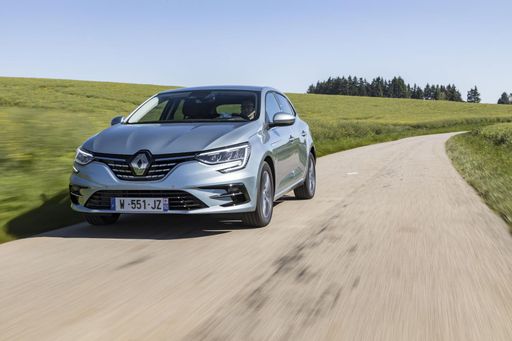 @ Renault Group Media
@ Renault Group Media
Renault Mégane
Costs and Consumption
View detailed analysis
Engine and Performance
View detailed analysis
Dimensions and Body
View detailed analysis
Nissan Leaf
The Nissan Leaf is a practical, easygoing electric hatch that turns daily commutes into a quiet, effortless affair while offering more cabin space than it lets on. It’s a sensible, wallet-friendly step into electrification for buyers who value comfort and simplicity over sporty drama, though those chasing long-distance thrills might look elsewhere.
details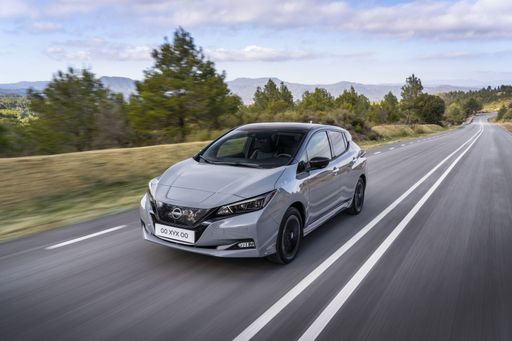 @ Nissan Motor Corporation
@ Nissan Motor Corporation
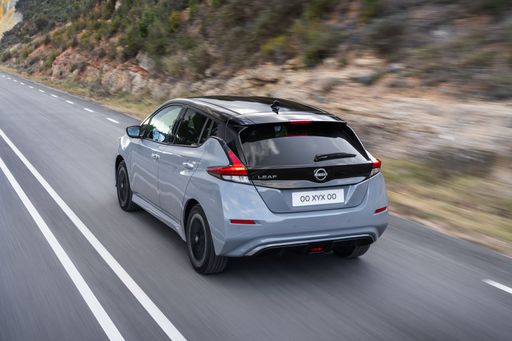 @ Nissan Motor Corporation
@ Nissan Motor Corporation
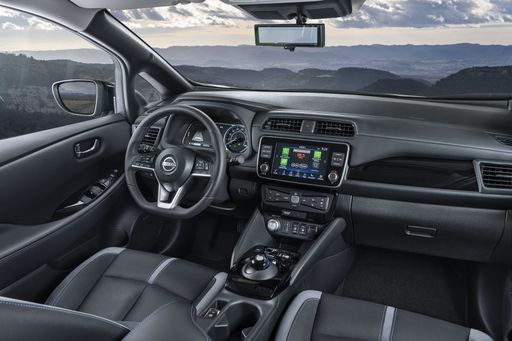 @ Nissan Motor Corporation
@ Nissan Motor Corporation
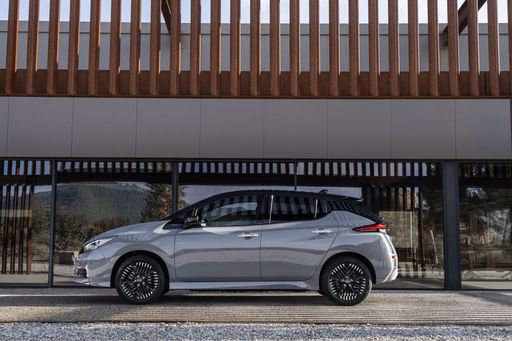 @ Nissan Motor Corporation
@ Nissan Motor Corporation
Renault Mégane
The Renault Mégane blends Gallic flair with practical everyday charm, showing that sensible transport can still have personality and poise. It’s a smart pick for buyers who want a comfortable, stylish hatchback that feels a little more special than the usual commute companion.
details @ Renault Group Media
@ Renault Group Media
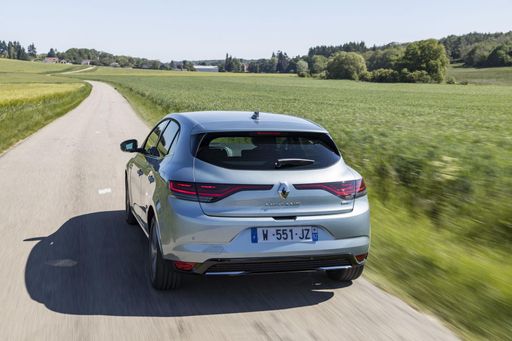 @ Renault Group Media
@ Renault Group Media
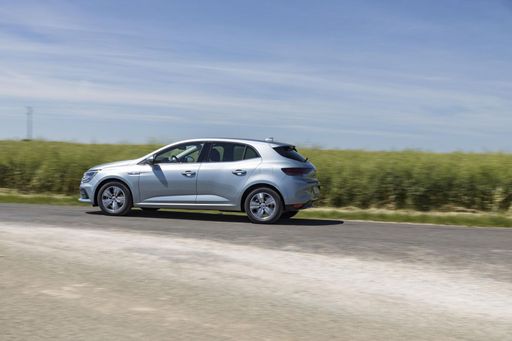 @ Renault Group Media
@ Renault Group Media
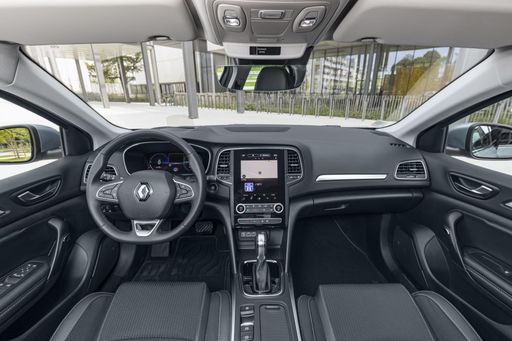 @ Renault Group Media
@ Renault Group Media
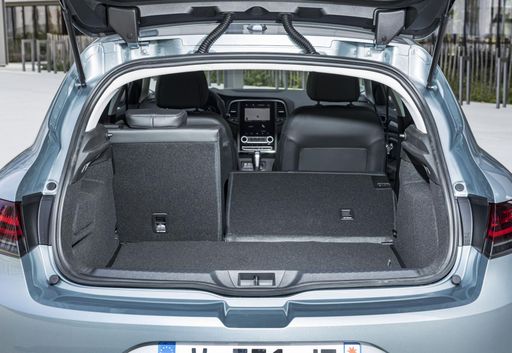 @ Renault Group Media
@ Renault Group Media
 @ Nissan Motor Corporation
@ Nissan Motor Corporation
|
 @ Renault Group Media
@ Renault Group Media
|
|
|
|
Costs and Consumption |
|
|---|---|
|
Price
30800 - 37200 £
|
Price
35100 - 38500 £
|
|
Consumption L/100km
-
|
Consumption L/100km
-
|
|
Consumption kWh/100km
16.7 - 17.8 kWh
|
Consumption kWh/100km
15.40 kWh
|
|
Electric Range
270 - 385 km
|
Electric Range
452 km
|
|
Battery Capacity
39 - 59 kWh
|
Battery Capacity
-
|
|
co2
0 g/km
|
co2
0 g/km
|
|
Fuel tank capacity
-
|
Fuel tank capacity
-
|
Dimensions and Body |
|
|---|---|
|
Body Type
Hatchback
|
Body Type
SUV
|
|
Seats
5
|
Seats
5
|
|
Doors
5
|
Doors
5
|
|
Curb weight
1580 - 1756 kg
|
Curb weight
1719 kg
|
|
Trunk capacity
385 - 394 L
|
Trunk capacity
389 L
|
|
Length
4490 mm
|
Length
4200 mm
|
|
Width
1788 mm
|
Width
1783 mm
|
|
Height
1540 - 1545 mm
|
Height
1505 mm
|
|
Max trunk capacity
790 L
|
Max trunk capacity
1332 L
|
|
Payload
384 - 415 kg
|
Payload
446 kg
|
Engine and Performance |
|
|---|---|
|
Engine Type
Electric
|
Engine Type
Electric
|
|
Transmission
Automatic
|
Transmission
Automatic
|
|
Transmission Detail
Reduction Gearbox
|
Transmission Detail
Reduction Gearbox
|
|
Drive Type
Front-Wheel Drive
|
Drive Type
Front-Wheel Drive
|
|
Power HP
150 - 217 HP
|
Power HP
218 HP
|
|
Acceleration 0-100km/h
6.9 - 7.9 s
|
Acceleration 0-100km/h
7.40 s
|
|
Max Speed
144 - 157 km/h
|
Max Speed
160 km/h
|
|
Torque
320 - 340 Nm
|
Torque
300 Nm
|
|
Number of Cylinders
-
|
Number of Cylinders
-
|
|
Power kW
110 - 160 kW
|
Power kW
160 kW
|
|
Engine capacity
-
|
Engine capacity
-
|
General |
|
|---|---|
|
Model Year
2019
|
Model Year
2025
|
|
CO2 Efficiency Class
A
|
CO2 Efficiency Class
A
|
|
Brand
Nissan
|
Brand
Renault
|
What drivetrain options does the Nissan Leaf have?
Available configurations include Front-Wheel Drive.
The prices and data displayed are estimates based on German list prices and may vary by country. This information is not legally binding.
